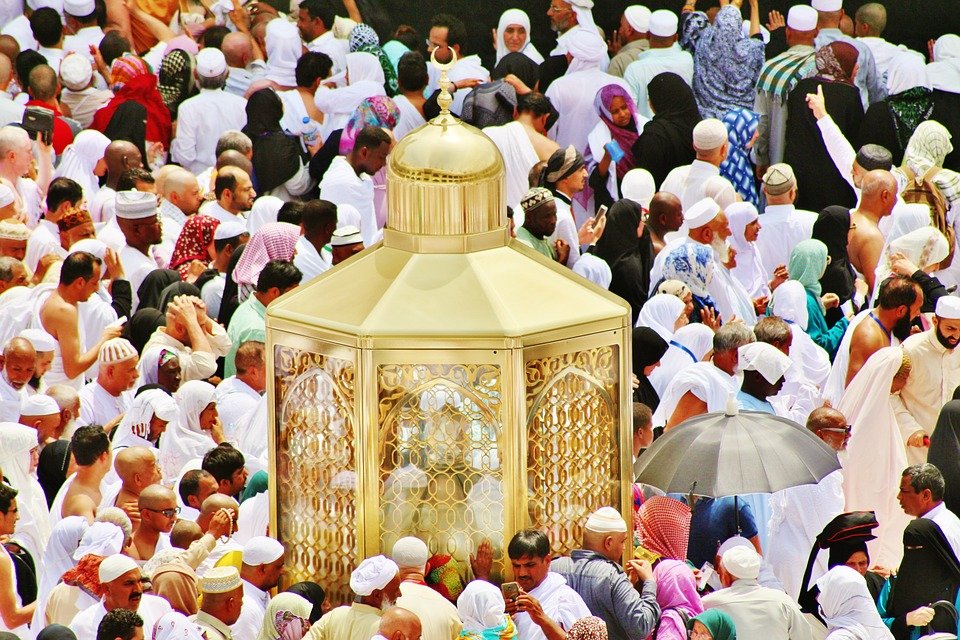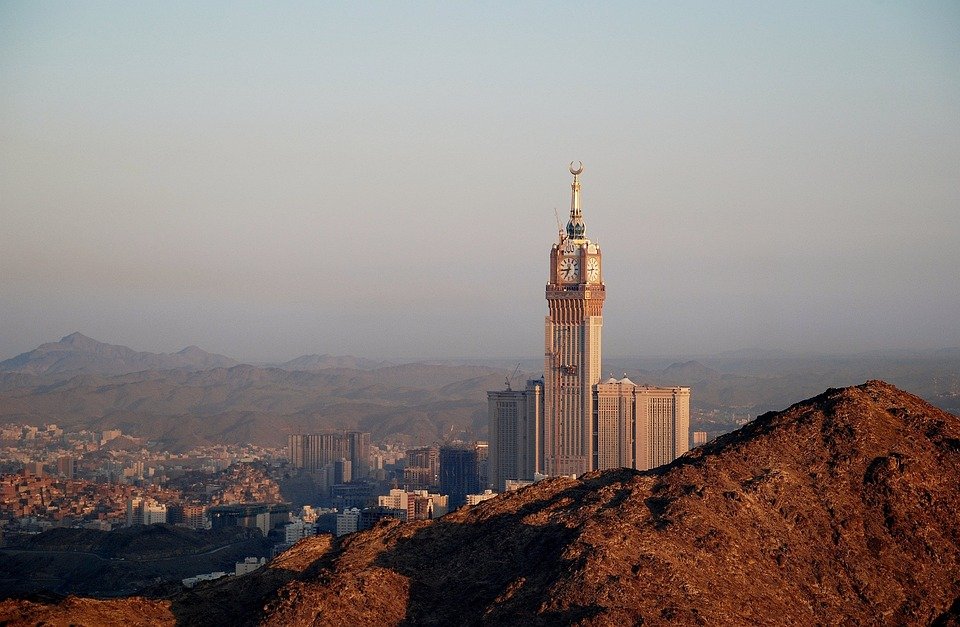You are here to read: What Happens on the Five Days of Hajj: A Complete Guide – A Thoughtfully Written Guide Offering Spiritual Wisdom and Travel Advice for Every Pilgrim who is going on holy journey of Hajj or Umrah.
When exploring the topic of “What Happens on the Five Days of Hajj,” you will uncover the deeply spiritual and transformative experiences that occur during this sacred pilgrimage. Each day is filled with specific rituals and actions that foster a profound connection to faith and community. In this article, I promise to guide you through the essential happenings of these five days, providing clarity on their significance and practices. From standing on the Plane of Arafat to the festive celebrations of Eid al-Adha, you will find a comprehensive understanding of each day’s events and the deeper meanings behind them.
In my opinion, understanding what happens on the five days of Hajj goes beyond the rituals; it speaks to the essence of faith and unity among Muslims worldwide. The significance of these days cannot be overstated, as they offer a chance for reflection, forgiveness, and renewal. With nine years of expertise in the Umrah and Makkah, Madinah travel field since 2016 at Airlinkhajjandumrah.com, we provide invaluable insights that resonate with both seasoned pilgrims and those preparing for their first Hajj. I feel confident that by the end of this article, you will have a clear and enriching perspective on this fundamental aspect of Islamic practice.
Day 1: The Arrival and Arafat
The first day of Hajj marks an exciting and significant time for all pilgrims. Individuals from various parts of the world gather in Makkah, overflowing with excitement and anticipation. The atmosphere buzzes with energy! Everyone is there for a common purpose: to fulfill a sacred duty. The day typically starts with pilgrims arriving at their accommodations and preparing for the tasks ahead.
As the sun rises, many pilgrims head to Arafat, a vital location in the Hajj experience. Standing at Arafat, I feel a sense of unity while surrounded by countless others also participating in this holy act. For many, this moment brings on heartfelt prayers, reflections, and a deeper connection with faith. Here, we spend the afternoon in supplication, asking for forgiveness, guidance, and peace. When the sun sets, it feels like a magical moment as there’s a sense of relief and hope in the air.
Day 2: The Day of Sacrifice – Eid al-Adha
On the second day comes the joyous celebration of Eid al-Adha. This holiday honors the willingness of Prophet Ibrahim to sacrifice his son as an expression of commitment to God. Here, I realize the importance of sacrifice and selflessness. Pilgrims take part in the ritual of Qurbani, which involves sacrificing an animal, often a sheep or goat, in honor of this hearty tradition.
The act of sacrificing isn’t just about the ritual; it also symbolizes sharing and community. After the sacrifice, attendees often share the meat with those in need, emphasizing the spirit of generosity. Watching families come together to celebrate fills my heart. The festivities extend beyond the physical act of slaughter; it’s a time for families and friends to bond and express gratitude.
Day 3: The Stoning of the Devil
The third day of Hajj amplifies the emotional and spiritual elements of this remarkable pilgrimage. One of the most significant rituals is the stoning of the devil at Jamrat. Pilgrims gather stones and select the perfect ones for this symbolic act. In my perspective, the act of throwing stones represents rejecting temptation and negativity in life.
You're at the middle of this awesome post at AirlinkHajjandUmrah.com through: What Happens on the Five Days of Hajj: A Complete Guide. Keep reading, it gets better!
As I join others at the site, I can feel a mix of emotions in the air. Each stone thrown echoes someone’s personal battles and challenges they wish to cast away. There’s a sense of relief and accomplishment as we participate in this unique ritual. It embraces everyone’s strength and determination, forging a sense of togetherness among attendees. Bonding with fellow pilgrims makes the experience even more memorable, creating lasting friendships.
Day 4: Tawaf and Sa’i
The fourth day is crucial for performing Tawaf and Sa’i, two essential rituals associated with Hajj. Tawaf involves circling the Kaaba seven times in a counterclockwise direction. As I walk around the Kaaba, I feel that divine connection coursing through me. I can see faces filled with devotion and awe, a vivid reminder of why we are here.
After Tawaf, pilgrims participate in Sa’i, which involves walking between the hills of Safa and Marwah. The act symbolizes Hagar’s search for water for her son, Isma’il. Each step taken brings a greater understanding of sacrifice and perseverance. The lively atmosphere encourages camaraderie as everyone joins in, walking together toward a common goal. This day is indeed about both spiritual fulfillment and reflecting on humility.
Day 5: Reflection and Departure
As the Hajj pilgrimage draws to a close, the fifth day is a time for reflection. Many pilgrims take a moment to consider the spiritual teachings and experiences they’ve encountered. I find myself thinking about everything I’ve learned and how I can take these lessons back to my everyday life.
As we prepare for departure, emotions often run high. A mixture of sadness and gratitude fills the air. Pilgrims exchange contact information, promising to stay in touch and share our stories. The bonds formed during these five days are extraordinary. It is not merely an ending, but the beginning of a renewed spirit and commitment to one’s faith. As we say goodbye to Makkah, I hold onto those memories, eager to carry the essence of Hajj into the future.
Personal Insights and Takeaways
The experience of Hajj isn’t just about rituals; it’s about growth and transformation. Each day offers unique challenges and blessings. I’ve learned so much not just from the teachings but from the people around me. This pilgrimage can change our perspectives on life and how we relate to others.
Seeing the world come together for a divine purpose shapes our understanding of community. Everyone brings their background and experiences to Hajj, creating a rich tapestry woven together through faith. In my opinion, the lessons learned during these five days extend far beyond the pilgrimage itself. Each moment serves as a reminder of our shared humanity and love for one another.
Conclusion: Cherishing the Hajj Experience
As I reflect on what happens on the five days of Hajj, I see that this pilgrimage is a beautiful blend of rituals, community, and deep personal connection. Every moment spent in Makkah is priceless. The friendships formed, the prayers offered, and the lessons learned all contribute to a transformative experience.
Hajj is not just a physical journey but also a deeply emotional one—one that leaves an imprint on our hearts forever. Whether you are planning your own pilgrimage or supporting those who do, let’s ensure we cherish the memories created during this sacred time. After all, it’s about taking those experiences into our daily lives and striving to be better individuals in honor of all that we’ve absorbed.
That wraps up What Happens on the Five Days of Hajj: A Complete Guide. Thanks for sticking with us till here! Share this: What Happens on the Five Days of Hajj: A Complete Guide with your friends.
Check our homepage at Air Link Hajj & Umrah for more awesome updates.
Some interesting posts are: 1: Umrah Mubarak, 2: When is Umrah closed 2026?, 3: When does Umrah start after Hajj 2026?
Mushu, an experienced Saudi Arabia traveler and writer, shares insightful tips and spiritual reflections to enhance Hajj and Umrah journeys for fellow pilgrims. He has been to Makkah and Madina from 2016 to 2023 many times and his posts will reflect this.







